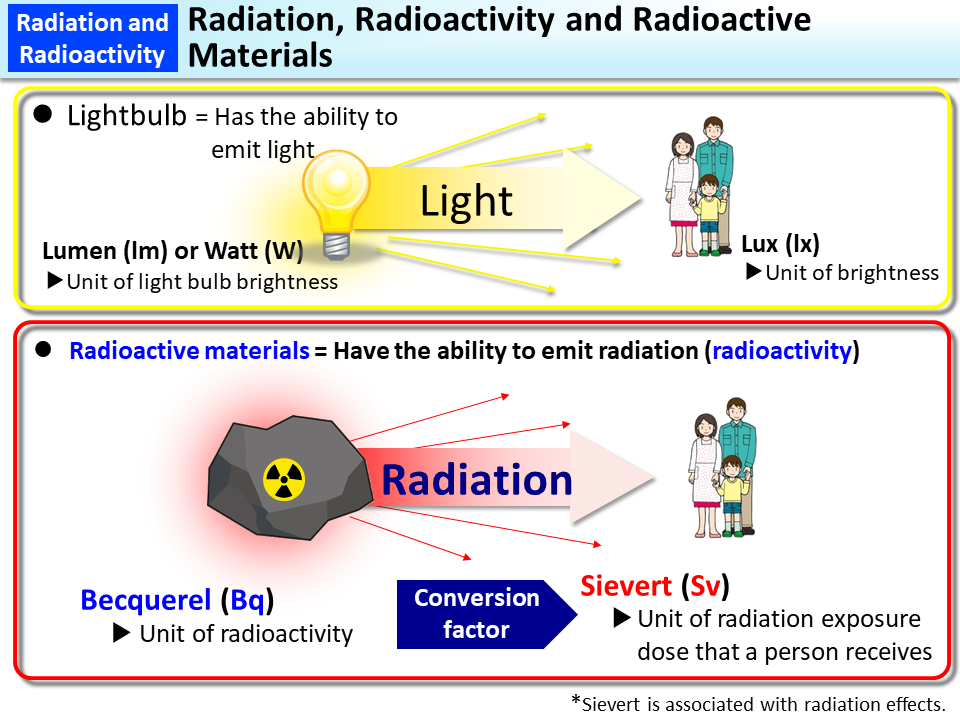Radiation, Radioactivity and Radioactive Materials
Radiation, radioactivity and radioactive materials are outlined below.
A light bulb, an object familiar to everyone, has the ability to emit light. Light bulb brightness is expressed in the unit of “Lumens” or “Watts.” People receive the light and feel the brightness. The unit in this case is “Lux.”
The units related to radiation, such as becquerel and sievert, which we often hear about lately, also have a similar relation to the above. For example, when a rock emits radiation, this rock is called a “radioactive material” (p.3 of Vol. 1, “Units of Radiation and Radioactivity”).
Radioactive materials emit radiation, and this ability is called “radioactivity.” In this case, it is expressed as “This rock has radioactivity” or “This rock emits radiation.” This ability of emitting radiation is expressed in the unit of “Becquerel (Bq).”
“Sievert (Sv)” is used as the unit of the radiation exposure dose necessary to know the effect of radiation to which a person is exposed. There is a special conversion factor to calculate “Sv” from “Bq.”
Higher radioactivity (value expressed in becquerels) means that the relevant radioactive material emits more radiation, but radiation exposure dose (value expressed in sieverts) varies depending on the distance between the radioactive material and the person exposed thereto. The intensity of radiation rises when the person is closer to the thing emitting radiation, and the intensity weakens as the distance becomes larger. This is the same as a bright light bulb appearing dim at a distance.
- Included in this reference material on March 31, 2013
- Updated on February 28, 2018

